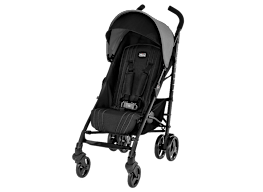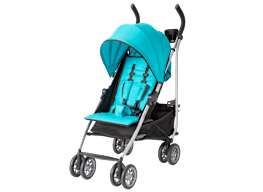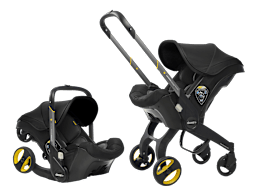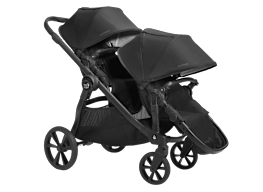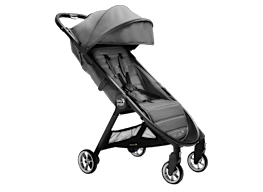Best Strollers of 2023
Top models from Consumer Reports' tests include strollers from Chicco, Graco, Peg Perego, and others
When you shop through retailer links on our site, we may earn affiliate commissions. 100% of the fees we collect are used to support our nonprofit mission. Learn more.
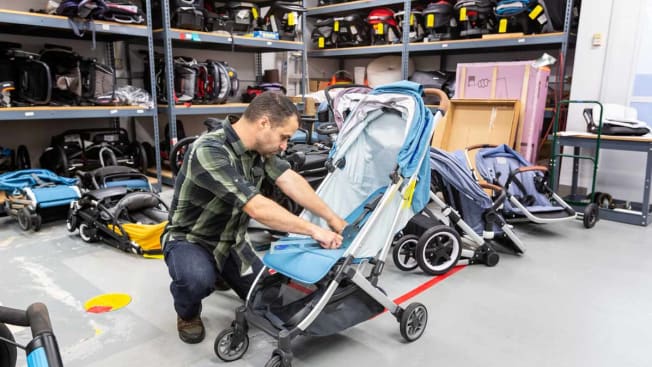
Running errands with a baby or toddler can be a grind. Toss in a 25-pound stroller and they’re a workout. So when it’s time to hit the road with your little one, you’ll want a kid cruiser that’s not only safe, but also sturdy, agile, and lightweight.
These attributes don’t always coincide. And it’s hard to know which stroller to buy when there’s little or no opportunity to buckle up your toddler for a test drive. Even if you’re able to try one out in a store, you won’t encounter the curbs, gravel or hills you’ll have to deal with in the real world. Fortunately, Consumer Reports engineer Joan Muratore makes a living taking strollers for a spin—so you won’t need to gamble on a bad roller.
How We Picked the Best Strollers
A stroller isn’t a car, but it is a transport vehicle that should offer your child a smooth ride and car-seat-like safety, and allow you easy handling as you lug it from trunks and push it around town.
You can score a great stroller in a wide price range—from a $100 umbrella to a $900 jogging stroller. Some fancy stroller wagons and double strollers for twins and multiples can cost more than $1,000. In our ratings, you’ll find a wide variety of strollers that we score based on ease of use, maneuverability, and safety. They include strollers from more than 30 brands divided into categories that include traditional strollers, double strollers, and travel systems. Below, we highlight the models that rose to the top in several of those categories, because choosing the ideal stroller depends on your family’s specific needs.
“There’s no one ‘best’ stroller,” says Muratore. “The best stroller for any given person is the one that best fits their budget, their baby’s age and development, and their lifestyle.”
What Features Should You Look for in a Stroller?
Once you’ve settled on the type of stroller that accommodates your child’s age and development, think about features, such as:
Harness: The harness and ease of buckling is vital for safety reasons. While toddlers can use three- or five-point harnesses, it’s critical for kids under 6 months of age to use a five-point harness so they don’t get jostled during strolls. A seat that folds back for nap time is very useful too.
Onboard storage: Will it store a diaper bag, purse, or cell phone? And does it have cup holders?
Stroller weight and size: Is it easy to lift and to navigate narrow spaces like crowded sidewalks or theme parks?
Folding and storing: Ideally, you’ll want a stroller that easily folds tightly (preferably with one hand) and fits into a trunk or closet without a hassle.
Canopy: Find a stroller with a safe canopy that shields your child from the sun and elements.
How CR Tests Strollers
CR tests dozens of strollers in our Yonkers, N.Y., lab: traditional strollers (including umbrellas and joggers), doubles, travel systems, joggers, convertibles, side-by-sides, and even car-seat strollers. We put each of these strollers through its paces, just as a parent would—evaluating it for ease of use, maneuverability, and safety.
To assess ease of use, we adjust the safety harness, fold and unfold the stroller, adjust the backrest, lift and carry it, engage wheel brakes, and gauge car seat removal and installation. We navigate each stroller—loaded up with a weight in place of a tot—through an S-curve test course, steering them between cones, up and down curbs, and over obstacles that simulate grass, mulch, and tree roots. In our stroller ratings, we even note which strollers satisfy strict requirements at Disney theme parks.
We also subject each stroller to standard safety tests patterned after the CPSC/ASTM standard, as well as CR-designed stability and breaking tests. When CR discovers a stroller is unsafe, we make sure consumers know about potential dangers.
If you’re just starting your stroller search, check out CR’s free stroller buying guide. CR members can access test scores and all the details on all our top picks below, as well as full ratings for nearly a hundred strollers we’ve tested in our labs.

















